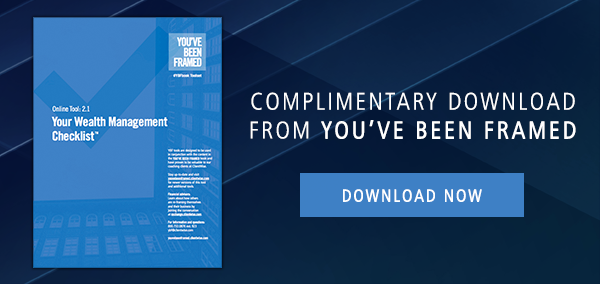How Top Financial Advisors Can Better Serve Clients' Heirs
 While the statistics vary slightly, time and again they all point to the fact that unless you change your process, the likelihood of holding onto your current clients’ assets once they transition to the next generation are slim. In fact, for most accounts significantly less than 20% of those assets will remain with your firm post-intergenerational transfer.
While the statistics vary slightly, time and again they all point to the fact that unless you change your process, the likelihood of holding onto your current clients’ assets once they transition to the next generation are slim. In fact, for most accounts significantly less than 20% of those assets will remain with your firm post-intergenerational transfer.
It’s the elephant in the room that few advisors seem to want to talk about, hoping that somehow their practice is inherently different as they whistle past the graveyard.
So what exactly can you do? First and foremost, don’t take it personally. It’s not an indictment on you or your business. The same abysmally low (if not lower) wealth transfer retention rates hold true for attorneys, accountants and private bankers. The simple truth is that far more often than not, the next generation wants to make a clean break and forge their own path with their own people.
Certainly there’s benefit to be gained from more effectively involving and engaging future generations while your client is still alive. Directing periodic family meetings, acting as the source for ongoing financial education for heirs, and introducing NextGen advisors from your firm to work directly and independently with your clients’ children and grandchildren can all serve to strengthen bonds with future inheritors. But even those measures aren’t likely to move the retention needle considerably higher.
Locking-in assets as part of an estate plan
The surest way to retain those assets you and your wealth management team have worked so hard to bring on-board, grow and protect is by focusing your efforts on integrating yourself into the early stages of each client’s estate planning process and positioning your firm as the logical choice to manage trusts that he or she establishes on behalf of their heirs. Through the use of directed trusts, you can be assured of retaining investment management over the trust assets (you can only be removed for a breach of fiduciary duty) while all the trust administration responsibilities (e.g., filing taxes and handling distributions) can be delegated to a designated trustee.
If there’s ever been a stronger incentive for developing an internal estate planning capability (or at a minimum partnering with a reputable estate planner) than increasing asset retention rates from 15% to 100%, I’d like to hear about it. For a $150MM AUM fee-only firm, we’re talking about holding onto an additional $1,275,000 in revenue each year that your firm would otherwise see headed out the door.
Coaching Questions from this article:
-
Think about your firm’s current approach to working with your clients’ children and heirs. Are there ways you can more actively engage the next generation?
-
Analyze your team structure. Are you assigning relationships to junior advisors solely based on size? Might there be a way to engage younger advisors to assist with the next generation of your A and B clients?
-
What steps can you take to build out your estate planning capabilities and better integrate those capabilities to address existing client needs while also ensuring long-term management of their assets?
Topics: Client Acquisition Client Engagement



